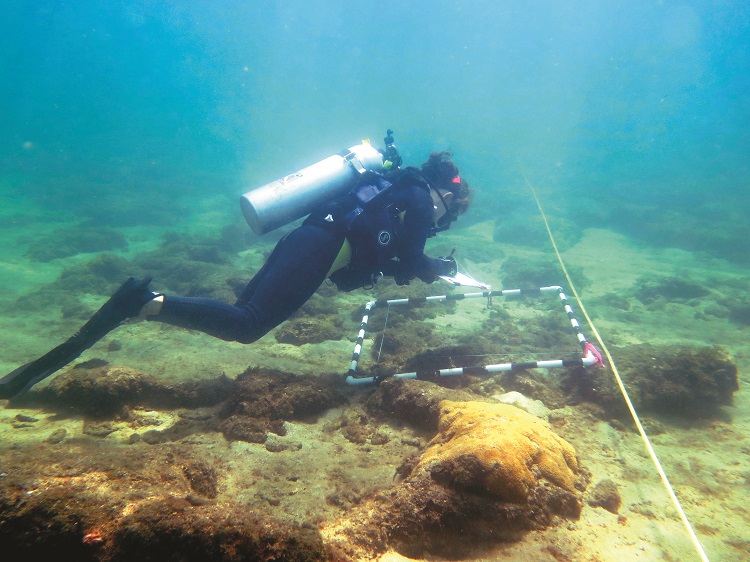Underwater Archaeology

With the planet rapidly changing, there is perhaps no greater time to tackle critical environmental issues associated with our planet’s waterway, while simultaneously recording our history in a way that has never been done before.
What is Underwater Archaeology?
Underwater archaeology is the study of human activity and culture through the recovery and analysis of remains, structures, and other artifacts that have been submerged partially or completely underwater. It requires the use of specialized equipment and techniques, such as remote sensing and diving, to locate and excavate submerged sites, as well as knowledge of preservation and conservation techniques.
So much emphasis has been placed on terrestrial or land-based archaeology over the prior decades, but APTIM is equipped to tackle underwater archaeology projects in the remaining 71 percent of the world, which is currently submerged. – Jacob Spuck, Cultural Resources Manager
Decades of Coastal Expertise
APTIM’s underwater archaeologists have more than 30 years of combined experience across the U.S. and around the world. They have supervised maritime archaeology projects with budgets exceeding $1 million and completed projects in the Great Lakes, Chesapeake Bay, Gulf of Mexico, Caribbean Sea, and the Pacific and Atlantic Oceans.
Our supervisor has been recognized by the Bureau of Ocean Energy Management and is commercially licensed. Team members have multiple scuba certifications, including specialties in underwater archaeology, and are certified in safety for several offshore environments. They are also members of various historic shipwreck survey research teams and organizations internationally.
The APTIM underwater archaeology team maintains a large fleet of maritime survey equipment with the most sophisticated remote sensing technology in the world. They work closely with APTIM’s coastal sciences and engineering team and utilize several marine geophysical software, including SonarWiz, Kingdon Suite, HYPACK, ESRI, EdgeTech, Qinsy, Qimera, SeaLINK, and MagPick.
Archaeological Research Capabilities
- Acquisition of Permits and Section 106 Compliance
- Curation and Artifact Analysis
- Diver Investigations and Ground Truthing
- Historic Shipwreck Research
- Maritime Archaeology Planning and Consultation
- National Register of Historic Places Nominations
- Submerged Archaeological Site Predictive Modeling
- Submerged Paleo Landform Geomorphological
- Analysis and Paleoenvironmental Reconstruction
- Submerged Site Mitigation Planning
- Phase I, II, and III Submerged Cultural Resources Reporting
- Public Outreach and Education
- Vibracoring and Dating of Submerged Paleosols
Marine Geophysical Survey Capabilities
- 3D Scanning
- Ground Penetrating Radar
- Magnetometry
- Multibeam Sonar
- Side Scan Sonar
- Sub-bottom Profiling
APTIM’s Comprehensive Coastal Sciences and Engineering Portfolio
The following submarket disciplines make up the remainder of our coastal sciences and engineering offering:
APTIM. In Pursuit of Better.
